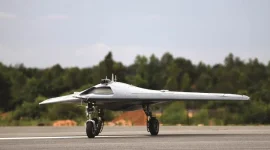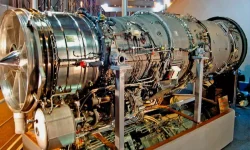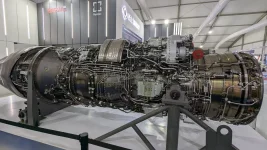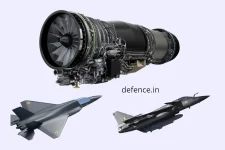- Views: 2K
- Replies: 6
India's flagship program to develop a fifth-generation stealth fighter, the Advanced Medium Combat Aircraft (AMCA), is rapidly advancing. The project has received a major boost with seven of the nation's leading industrial firms submitting bids to take part in its critical manufacturing and development phase.
According to the Aeronautical Development Agency (ADA), which spearheads the program, contracts are expected to be awarded shortly, setting a clear path for the fabrication of the first prototype to begin by mid-2027.
The Expression of Interest (EoI) for the aircraft's Full Scale Engineering Development (FSED) phase, valued at ₹15,000 crore, has attracted bids from a formidable list of companies.
Prominent names include Larsen & Toubro (L&T), Tata Advanced Systems Limited (TASL), Mahindra Aerostructures, Bharat Electronics Limited (BEL), and Godrej Aerospace.
The bids cover essential work packages for the aircraft's airframe, advanced avionics, propulsion systems, and sophisticated stealth coatings.
These components are vital for achieving the AMCA's planned capabilities, which include a twin-engine design, stealth profile, and the ability to achieve supercruise—sustained supersonic flight without the use of fuel-guzzling afterburners.
To ensure the project proceeds without delays, the ADA has taken proactive steps by pre-ordering essential components, such as advanced composite materials for its diverterless supersonic inlets, a feature that enhances stealth and high-speed performance.
An ADA official confirmed that workshare agreements are already in place, allowing manufacturing to commence as soon as the winning bids are announced.
This five-year FSED phase aims to produce a fleet of six prototypes, with series production for the Indian Air Force (IAF) planned for the early 2030s. The initial goal is to equip the IAF with over 126 of these advanced aircraft.
Dr. S. Unnikrishnan, the chief of ADA, has publicly confirmed the ambitious schedule, stating, "The first prototype rollout is slated for 2028, followed by its maiden flight shortly thereafter." This timeline follows the successful completion of the Conceptual Design Phase last year.
The project is currently supported by an initial funding of ₹10,000 crore from the Defence Research and Development Organisation (DRDO).
Early prototypes of the AMCA will be powered by General Electric's F414 engine, which will be produced under license by Hindustan Aeronautics Limited (HAL), with a plan to integrate a more powerful indigenous 110kN engine in the subsequent Mk2 version.
The acceleration of the AMCA program is strategically vital for the Indian Air Force, which is currently addressing a shortfall in its number of fighter squadrons following the recent decommissioning of its aging MiG-21 fleet.
The AMCA is designed to be a multi-role stealth aircraft, capable of performing deep penetration strikes, electronic warfare, and Suppression of Enemy Air Defences (SEAD) missions.
It is envisioned to work in synergy with other indigenous aircraft; the AMCA will handle high-threat missions, while the Tejas Mk2 will be tasked with launching long-range missile barrages, and the Tejas Mk1A will manage aerial intercepts.
Defence experts have lauded the strong industry response as a significant success for the "Make in India" initiative, noting that the project is expected to feature over 70% indigenous content and will significantly strengthen India's domestic aerospace and defence ecosystem.




